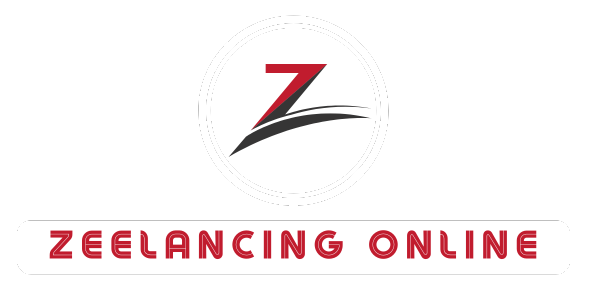It took me almost seven years of blogging to create my items, which are the first couple of eBooks, one for Pro Blogger and one for Digital Photography School. I ended up being produced by them for more than $160,000 in 2009 alone and changed my business.
Back in 2014, I wrote about the experience and exactly how it rarely happened:
My big problem had been a severe lack of time. Between juggling two growing blog sites and a family that had had our first child), I wasn’t sure exactly how I’d ever write an eBook. I also possessed a long list of excuses to put it off.
I’d never written, created, or marketed a product of my own before… I did have a shopping cart system… I didn’t know if my readers would buy…
In short, the dream of selling and creating a personal e-book remained in my head for two years until 2009. Ironically, by that point, I’d also become busier (we’d just had our second son, and my blogs had continued to develop), but I knew that I never would if I didn’t bite the bullet and do it.
Does any of that problem to you? Perhaps you’re blogging every busy day, or you’ve got young ones at home, while the whole notion of creating a product appears very daunting.
You’re not alone. But creating your own product—a simple one—may bring in money much faster than affiliate sales or marketing. After all, your audience trusts you. And when they like your writing, they’ll want more from you.
In this post, I’ll walk you through seven different sorts of items you could produce. Some require more time and investment than is initially required, while others you could plausibly create in a weekend.
But First, What is a “Product”?
What do I suggest for a “product”? It might be virtual (like software or an ebook) or physical (like a T-shirt or a paperback guide).
A product might involve an element of ongoing commitment, and it really isn’t only in regard to the hours you put in. So, I won’t be freelancing, which covers virtual assistant roles or other services right here.
Seven Kinds of Product You Could Sell from Your Blog … Which One is Appropriate For You?
The seven kinds of products I’m planning to run through in this post are:
Ebooks: these could be placed as “guides” or courses that are even self-study. They’re written downloadables, probably in .pdf, .mobi, and/or .epub format.
Printables: they are built to be printed away. They might be planners, cheat sheets, party invites, worksheets—anything someone might buy to print and (probably) fill in.
Digital subscriptions: These are usually delivered by email and are often fairly cheap compared with various other products (making them attractive to first-time purchasers).
Online courses could be text, sound, and/or video, although video is increasingly becoming the “default” expectation.
Membership in a private website or group: This might be considered an account site you host yourself or something as simple as a closed Facebook group.
Software or phone software: unless you’re a designer, this probably isn’t the product you’ll first go for. But maybe it’s very lucrative for anyone to try later on.
Physical services and products could be almost anything from books to t-shirts to one-off bits of art. But they, aren’t the greatest products to begin with unless you’ve already got a small business selling.
Let’s just take a look at each one for much more information. I’ll give examples for each one so that you can see how different bloggers are using these different types of products.
no. 1: Ebooks: Are They Appropriate for you?
1st two products I created straight back in 2009 were both ebooks: 31 Days to Build a Better Blog (since updated into a program) and the fundamental Guide to Portrait Photography (now superseded by a selection of portrait photography books)
That was almost ten years ago, and that will be quite a while within the world of ebooks. Amazon only recently launched the Kindle, and the iPad will not appear for the next 12 months.
These days, there are an entire lot more ebooks out there. But let that not put you off. A well-positioned ebook can nevertheless be a great beginner product. Then modify them and add some extra product if you’re pressed for time, you may want to compile some of your best blog posts into an e-book (that’s what I did with 31 Days to Build a Much Better Blog.
Example: Deacon Hayes’ You Can Retire Early!
You Can Retire Deacon that is early Hayes
Many bloggers sell ebooks via their platforms, charging premium costs for specific information. But it might be an improved fit for your audience if you offer your ebook through a well-established ebook, such as Amazon, especially if:
your ebook has a (potentially) big market
they’re unlikely to pay a lot more than $9.99 for it
they’re a bit wary about buying online.
This is what Deacon does with his ebook You Can Retire Early! It’s sold through Amazon, but to create a great deal to capture his visitors’ e-mail addresses, he offers a free course for visitors who email him their receipts.
We now have 23 ebooks on Digital Photography School if you’d like to see more examples of ebooks.
#2: Printables
Printables are becoming increasingly popular. They differ from ebooks in that they’re designed to be printed and used/displayed and are unlikely to contain a lot of text.
Printables could be almost anything:
Planner pages
Party invites
Art pieces
Greetings cards
Kids activities are
Calendars
Gift tags
Adult coloring sheets
It can be whatever you can think about that suits your audience and blog.
Depending on what you’re creating, unless you’re skilled at design, you may want to hire a professional designer to create top-quality printables.
Nevertheless, the look that is graphic Canva does excellent work at making DIY graphic design more straightforward to turn out professional-looking printables.
Example: Chelsea Lee Smith’ “Printable Pack”
Chelsea Lee Smith printables
Many of Chelsea’s printables are offered for free on her blog, but this pack adds five exclusive ones and brings everything together in one spot. Most of her printables are straightforward (which could be considered a bonus to visitors who are not planning to spend a king’s ransom on ink). She’s priced the pack at $4.99, making it an appealing purchase for busy parents.
#3: Digital Subscriptions
A digital subscription is information or a resource you send out to subscribers on a regular basis. Depending on what it really is, it might be anything that pays a couple of dollars up to a couple of hundred dollars each month.
Delivering the subscription could be as simple as adding users who are paying to a message list (which you can do by linking PayPal with your e-mail provider). You won’t have to create all this content at the start, although you’ll want to get ahead so you always offer your resources to your clients on time.
Depending on the type of membership, you can either:
provide all members with all the content in the same order (e.g., they start with week 1, then week 2, and therefore on)
Distribute a weekly or monthly email to everybody else at the same time; therefore, they have the same content whether they’ve been with you for a day or a year.
Example: $5 Dish Plan, by Erin Chase
Erin Chase 5 buck meal plan
Erin’s product solves a problem that numerous parents have: how can you quickly and cheaply put a tasty meal on the table each night without investing hours every week in a complicated meal plan?
This weekly subscription costs $5/month and has a 14-day free trial. Like Chelsea’s printables, it’s priced at a point where it’s an attractive offer to busy families. We recently had Erin on the ProBlogger podcast. She started blogging and went from zero to a six-figure income in two years to help you hear more about how.
#4: Online Courses
Building an online course takes a lot of time, and the technology can be daunting for some bloggers.
At its simplest, an online course is fundamentally the same content as an ebook, only divided into “lessons” or “modules” instead of chapters. But courses have numerous additional features such as:
Video content: courses based around videos normally have transcripts (or at least summaries) to help students who prefer not to watch movies or who require a recap to relate to.
Sound interviews: As they can listen while commuting or exercising, if you don’t have the tools to create high-quality video, audio can be considered a good alternative (and some students prefer it).
Quizzes: based on what you’re teaching, it might be helpful for students to try their knowledge at the end of each tutorial or module.
Connection: You could select to offer feedback to pupils, or perhaps you could have a closed Facebook page for pupils to join, where they can talk with the other person and you.
Official certification: This is more appropriate for some topics than others, but it is helpful for pupils to be provided with some kind of official certification at the end of the course.
Example: ProBlogger’s Courses
Seven Kinds of Products You Could Offer From Your Blog
A whole suite of courses at ProBlogger we’ve launched. We decided on the self-hosted path using Learndash as our training Management System. You don’t necessarily have to host your course on your own website. One can use numerous online platforms, such as Teachable and Udemy, to provide your course.
Learndash (partnered with the Buddyboss-friendly Social Learner theme) can offer all the features I mentioned with our courses. We have a mix of compensated and free courses, so whereas we charge for other people, we can use some courses to generate leads and build our audience.
For a much better Blog Course, we trialed having Facebook groups for students to interact as part associated with the courses for our FREE Ultimate Guide to Starting a Blog course and also for our paid 31 Times to Build. Indeed, Facebook has a Learner that is“Social for setting up a course team where you can publish your course content in learning modules or units. It’s common for bloggers’ courses can be also run by an organization for communication, but be cautious with enough time and attention this requires.
No. 5: Membership Website
For quite a years that are few, “membership sites” have been popular. They are essentially closed websites where people have to cover and subscribe (almost always for the monthly fee) to see the content.
The content might be text-based or (more often) include video or audio. Sites might offer“monthly seminars, ” “workshops, ” or regular courses that members can participate in.
Some bloggers offer Facebook sites with paid membership on a smaller scale. This can be a fast and simple way to set up your item, though it’s worth remembering that if you’re banned from Facebook, you’ll no longer have access to your team!
Example: Copy blogger’s “Authority”
Copyblogger’s membership site Authority focuses on the grouped community elements and the teaching materials supplied. It’s a fairly high-end community aimed at expert copywriters, small businesses, and so on. In addition, it provides members with the opportunity for expert coaching and peer help.
Like many account websites, it features a monthly membership ($55/month). But there’s also the possibility to shop for a membership that is year’s $550

